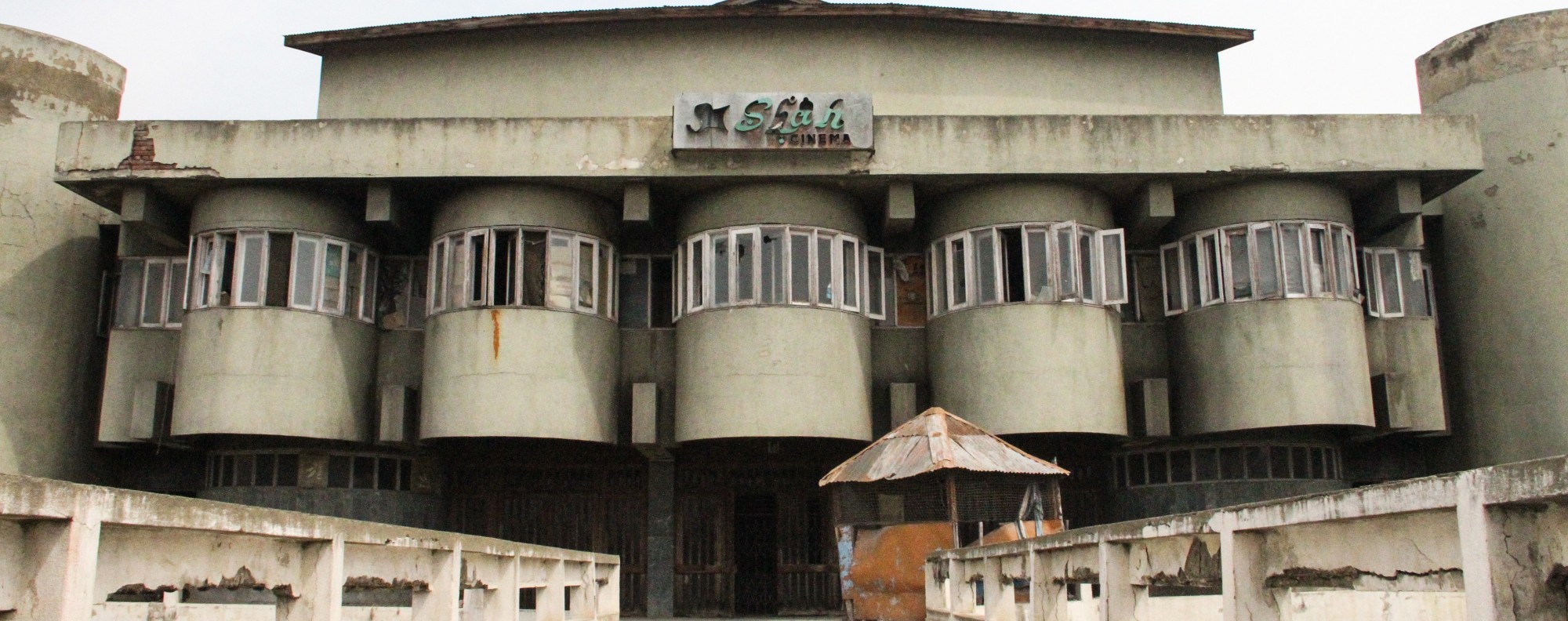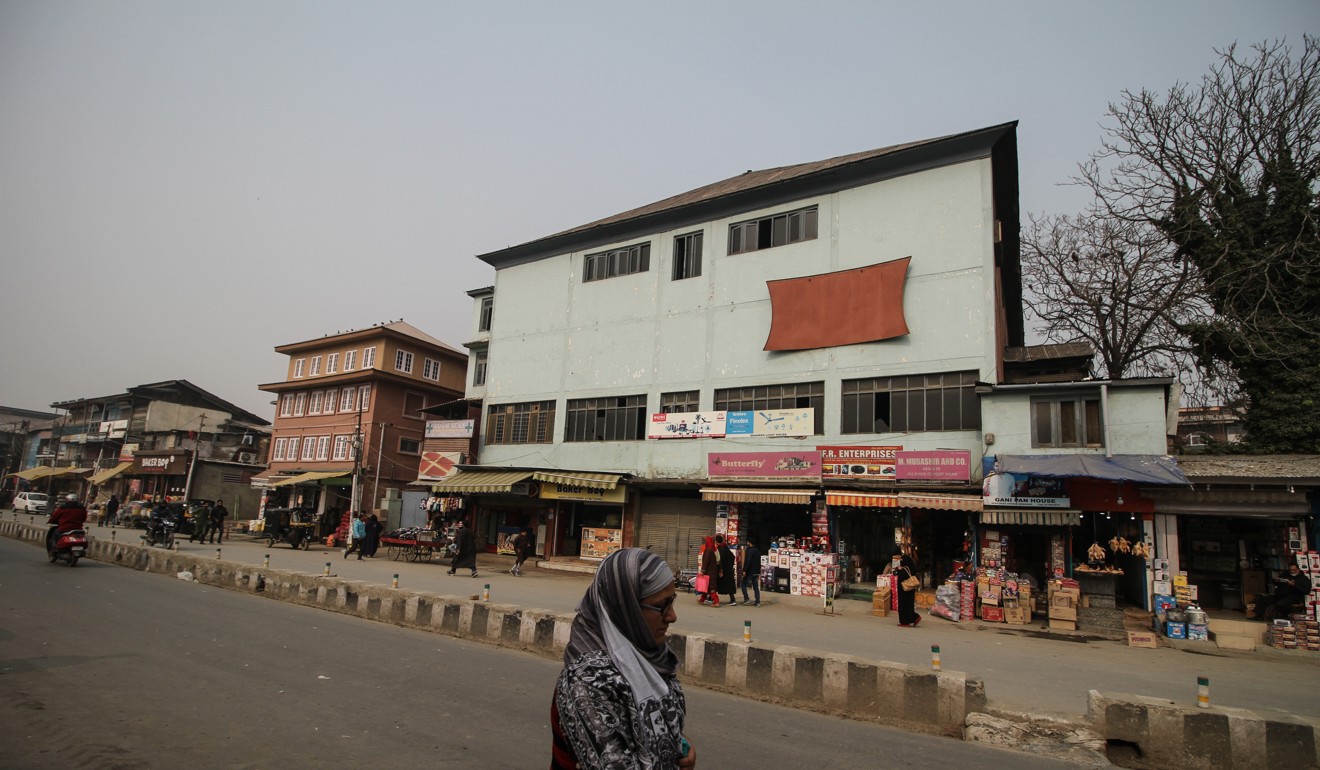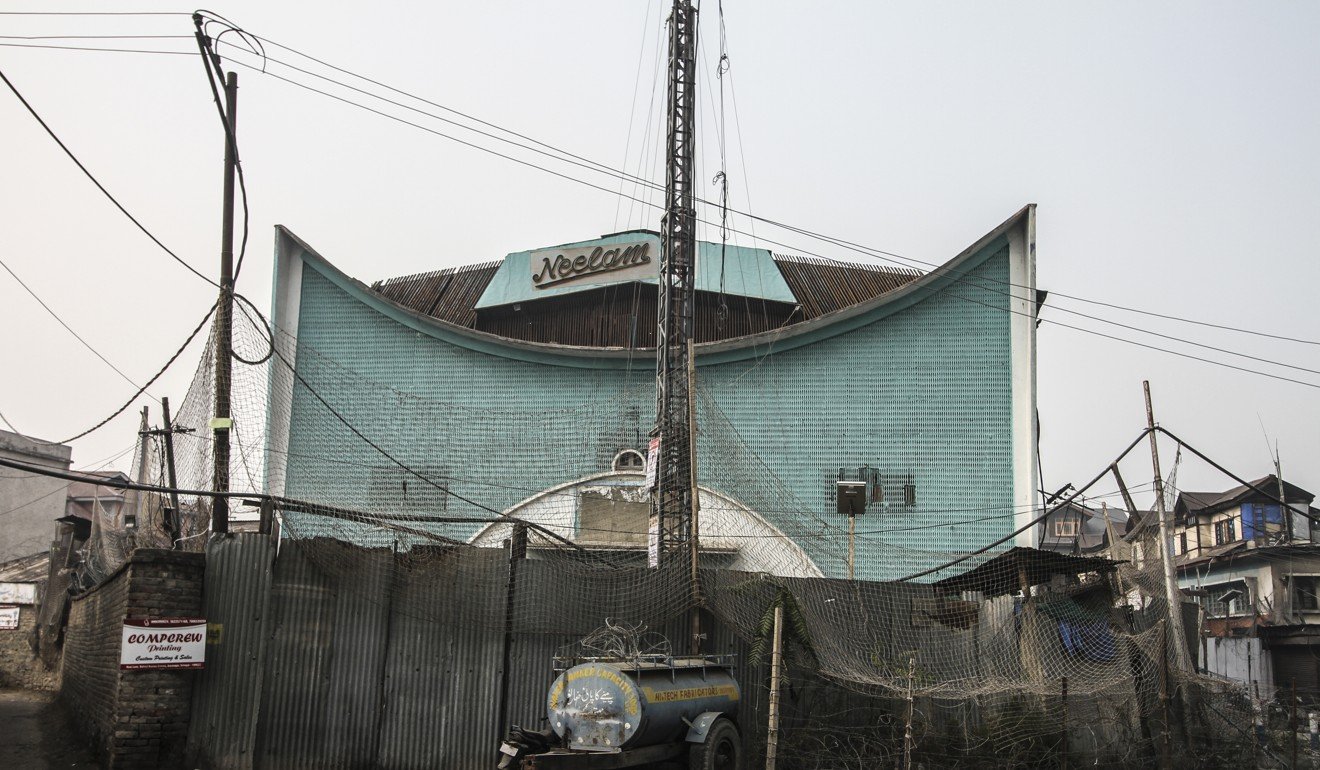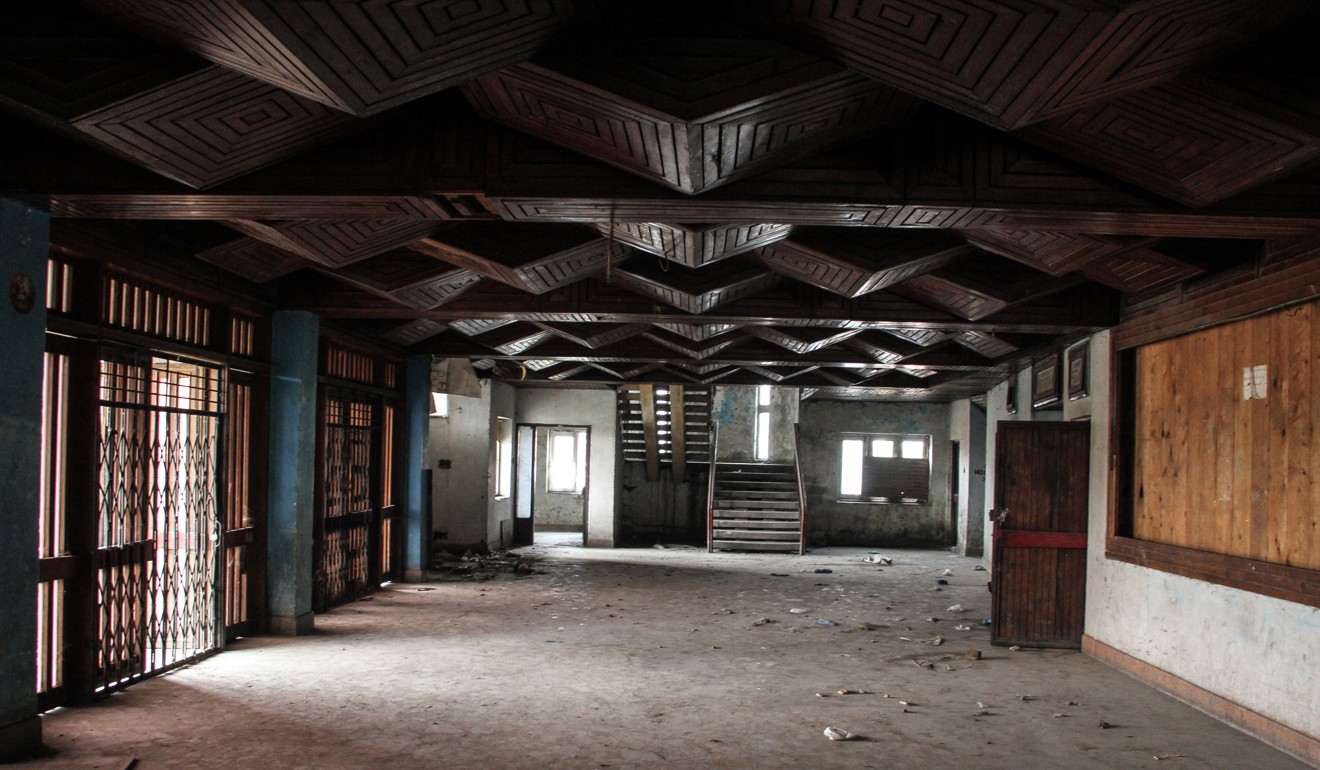
The abandoned Shah cinema. Photo: Sameer Mushtaq
Before Kashmir became synonymous with unrest, its movie halls were the love of Bollywood
Now, 30 years since they were shut by rebels who deemed them un-Islamic there is hope once more for the region’s movie-lovers
9 Dec 2018 By Aijaz Nazir
Mohammad Ashraf’s eyes
light up when he recalls the glory days of the Naaz cinema. In a bygone
time, before Kashmir became synonymous with unrest, the Naaz was a
beacon of light entertainment: it occupied a marvel of architecture that
still houses Ashraf’s humble shop.
Day trippers from miles around would make a beeline for the cinema to watch one of its three shows a day. “I used to shut my shop before 9pm
Before the insurgency against Indian rule broke out, there were as many as 15 cinemas operating in Kashmir – a region Bollywood directors were fond of. Celebrated auteur Yash Chopra used the area as a backdrop for films such as the 1976 romantic drama Kabhi Kabhie , and locals like Pahalgam native Abdul Hamid would be used as extras.
“I worked in Bollywood movies like Farishtay and Raaj Tilak ,” Hamid recalls. “They would pay about 100 rupees (US$1.42) per day to the young boys like me and would pick [us up] and drop us [back] home.”

The Naaz cinema, in the Saraibal area of Srinagar. After being defunct for three decades, its owners plan to turn it into a shopping complex.
Those halcyon days were shattered – seemingly forever– when a disputed state election led to the outbreak of the insurgency in 1988. Rebel fighters deemed cinemas like the Naaz un-Islamic, and the movie screens went dark as the violence intensified, as if portraying the fortunes of Kashmir itself.
But now, more than three decades on, there is a flicker of hope for the region’s long-suffering film lovers.
On November 28, a seven-day film festival was launched in Srinagar, with its founders, a group of local movie buffs, hoping to hold the event twice a year with screenings in the newly renovated 675-seat Tagore Hall.
Organiser Mushtaque Ali says that while Kashmiris have access to the internet and television, film has its own role to play. “We aim to showcase the films to educate people in the valley, to show them how important films are for any community,” he says.
The new weapon in India’s Kashmir conflict? Teenage girls with stones
How successful the festival will be is yet to be seen, but it has already sparked the imaginations of Kashmiri filmmakers like Shafqat Habib, who has spent the past 15 years living in Mumbai. Habib thinks one way of reviving cinema’s fortunes in Srinigar might be to forgo the traditional movie halls in favour of a more modern approach.
“Buildings can’t make a cinema. If we think that traditional cinemas will work, they won’t. We have to approach [this] in a very different way by incorporating theatres with shopping malls,” he says.
Where exactly that would leave buildings like the Naaz is unclear – while Habib agrees that opening dedicated cinema halls would help filmmakers reach a larger audience, most of the buildings are beyond redemption.

The Neelam cinema now houses security forces. Photo: Sameer Mushtaq
Some were repurposed as hotels, hospitals or shopping centres. Others were occupied by Indian security forces, to be used as fortified camps. The remainder were simply abandoned and left to slowly succumb to the ravages of time.
And even if the buildings themselves could be restored, there are the armed rebels to worry about.
When an attempt was made in 1998 to reopen three of Srinagar’s cinemas – the Neelam, the Regal and Broadway – using a US$40,000 government grant, things soon turned violent. A bomb blast in September 1999 at the new and improved Regal cinema’s first screening killed one and injured many others – injecting fear into the hearts of the city’s moviegoers.
The attack discouraged any other theatre operators from opening and with a dwindling viewership, both the Regal and Broadway soon closed. The Needlam limped on for about six years with ramped-up security measures amid persistent threats of violence until it, too, closed its doors.

What remains of Srinagar’s Palladium cinema, which was owned by Manmohan S Gowri. Photo: Sameer Mushtaq
The failures were seen by many as the last nail in the coffin for the industry, something bemoaned by Manmohan S Gowri, owner of the now defunct Palladium cinema, who remembers when Kashmir was famous for its movie culture and he would screen “almost every” new film that came out.
But it may be that simply too much time has passed to resurrect the glory days that Gowri remembers, with the long years of darkness leading to a generational divide that may be insurmountable.
Gunmen in Kashmir left me paralysed. Now I teach its disabled children
Few of the young people living in Srinigar today have ever set foot inside a cinema. Some, like Showkat Ameen, 30, have only ever seen pictures of a functioning movie theatre online. Other young people, who have visited out-of-state cinemas, have come back with mixed reports.
“I visited a cinema in Delhi,” says Majid Khan, 26. “But I couldn’t bear watching [the film] for more than 10 minutes [before I] left the hall. [There] was a loud sound coming from all directions and my heart started thumping heavily.”
And even among those who remember pre-insurgency Kashmir, there are hints that cinema’s golden days were not always as untroubled as some like to remember. Policeman Fayaz Ahmed recalls keeping his visits a secret from friends and family back in his home village, 70km away. “It was kind of a taboo in our village and I think generally in rural areas,
I would travel to Srinagar at least once a week and stay with a friend to watch a movie,” he says.

Inside the abandoned Shah cinema in Qamarwari. Photo: Sameer Mushtaq
Gowri, of the Palladium, thinks this is a shame. He believes that movies can enlighten and inform.
“Cinema is not about vulgarity. There are movies [about] religion, science, culture and education which [could] be screened in theatres and educate people,” he says. “I firmly believe that people are in favour of opening cinema halls.”
Still, significant resistance remains, even beyond the region’s separatist leader. Recent
proposals to bring back cinemas have launched fierce debates on social media.Some feel the debate is insensitive given the region’s troubles.
In July 2016, the death of Burhaan Wani, a charismatic young separatist leader, launched widespread unrest that claimed the lives of more than 100 people over five months.Since then, killings have been almost daily. Last week, for example, more than 18 people, including 12 militants,were killed in two separate encounters in Anantnag and Shopian district. Related articles
“How can people go
a movie when there are killings taking place?” says Suhail Bhat, a journalist based in Srinagar. “People [don’t want to] watch movies while there is bloodshed going on.” ■
